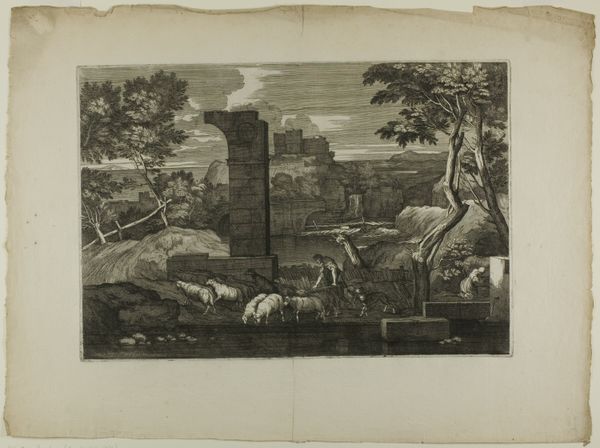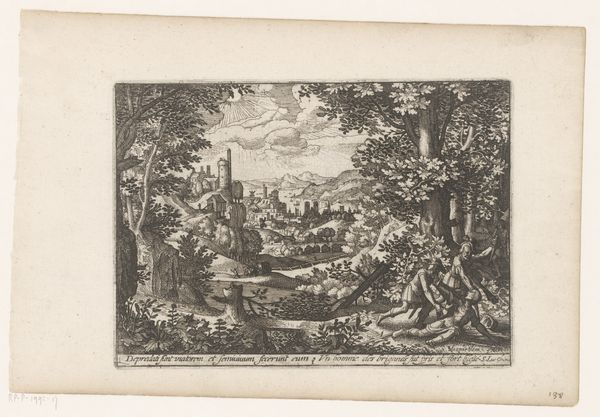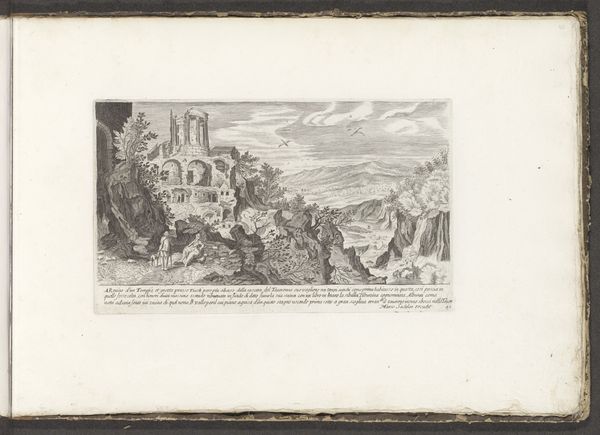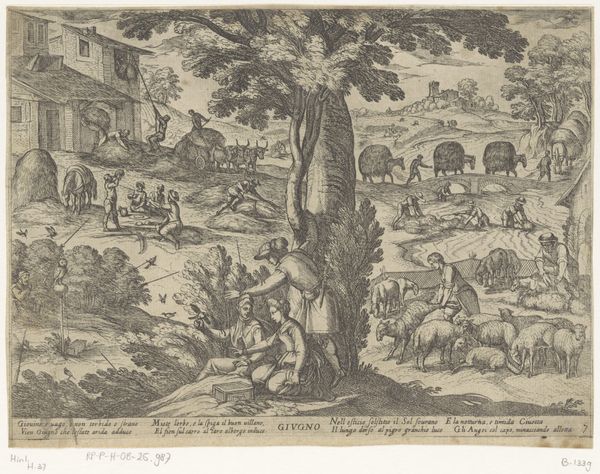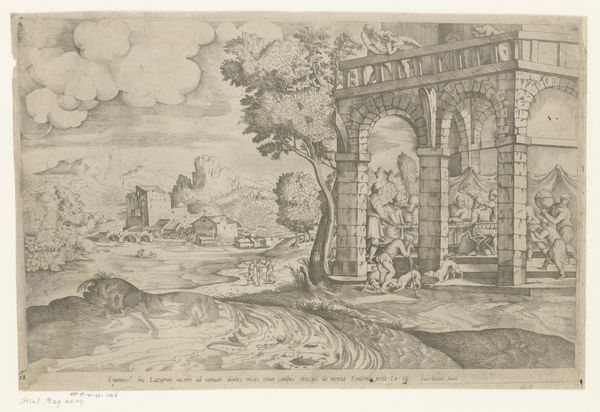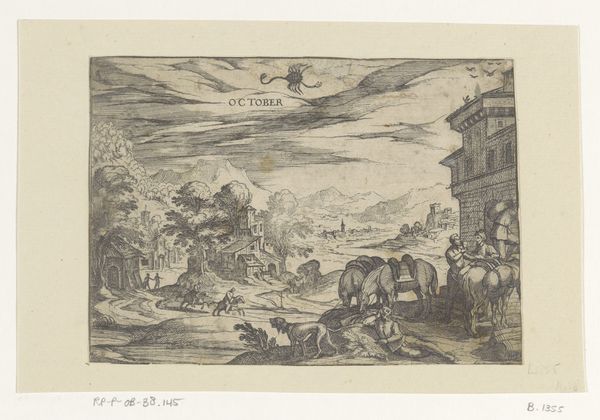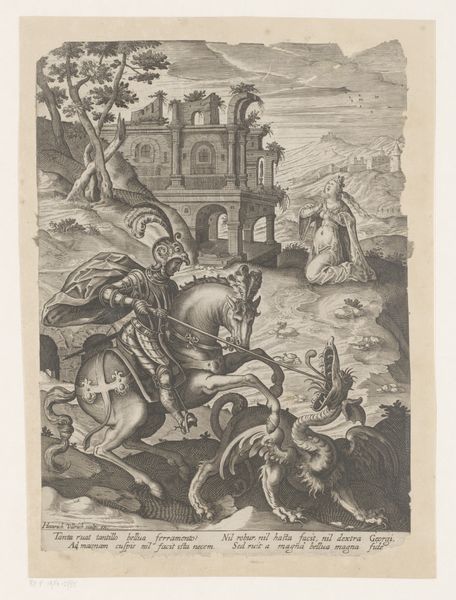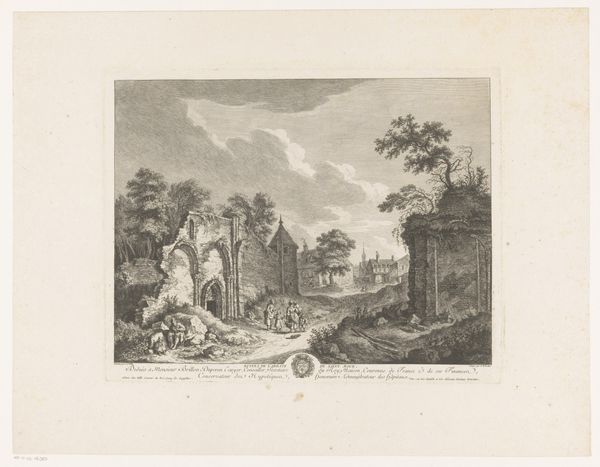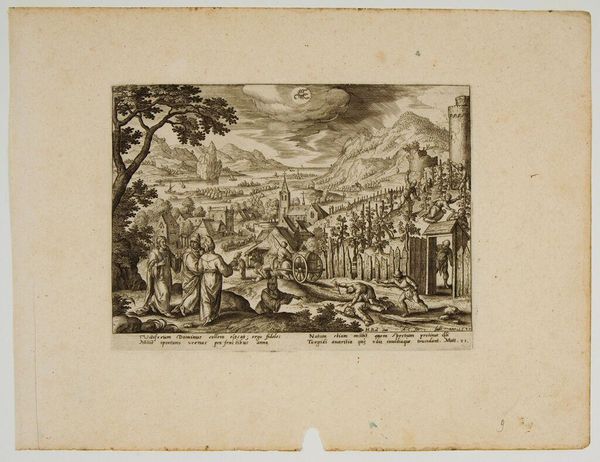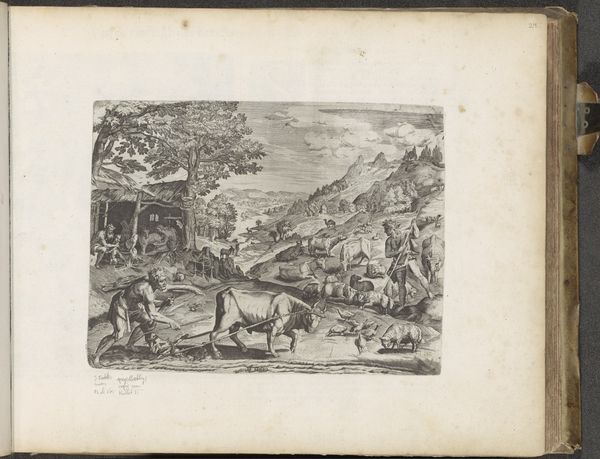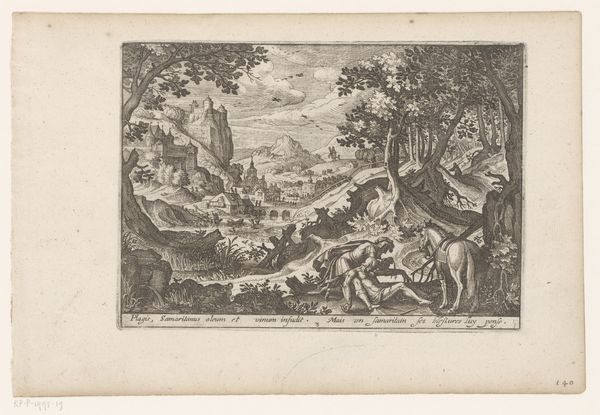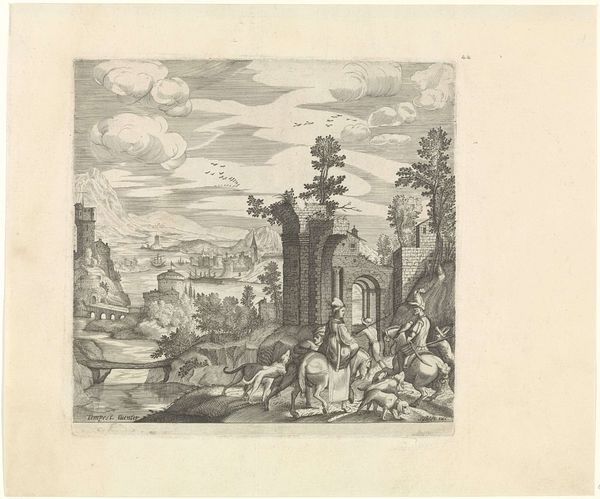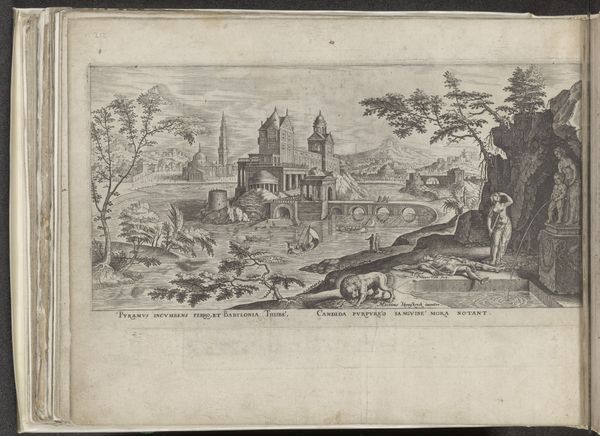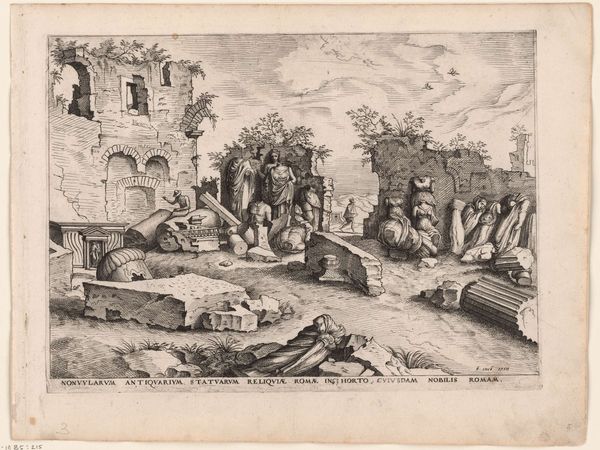
print, etching
#
allegory
# print
#
etching
#
old engraving style
#
landscape
#
mannerism
#
figuration
#
history-painting
Dimensions: height 209 mm, width 290 mm
Copyright: Rijks Museum: Open Domain
This print, “Roof van Proserpina,” was created by Johannes and Lucas van Doetechum using the intaglio process, a method of engraving on a metal plate. Look closely, and you’ll see the incredible level of detail achieved through careful incisions. The image is made by cutting lines into a copper plate, which then holds ink. This is an indirect process, where the image is built through labor and precision. The richness of tone and texture emerges from this process, giving the print a tactile quality despite its two-dimensionality. Engraving demands skilled craftsmanship, reflecting a deep engagement with materials and technique. Each line represents a deliberate decision, a physical act of creation. The print becomes more than just an image; it’s a record of labor, skill, and the intimate relationship between artist and material. This kind of printmaking makes art more accessible. Instead of a unique painting, many identical prints can be pulled from a single plate. Considering the materials, making, and context, it is important to understand the full meaning of an artwork, challenging traditional distinctions between fine art and craft.
Comments
No comments
Be the first to comment and join the conversation on the ultimate creative platform.
